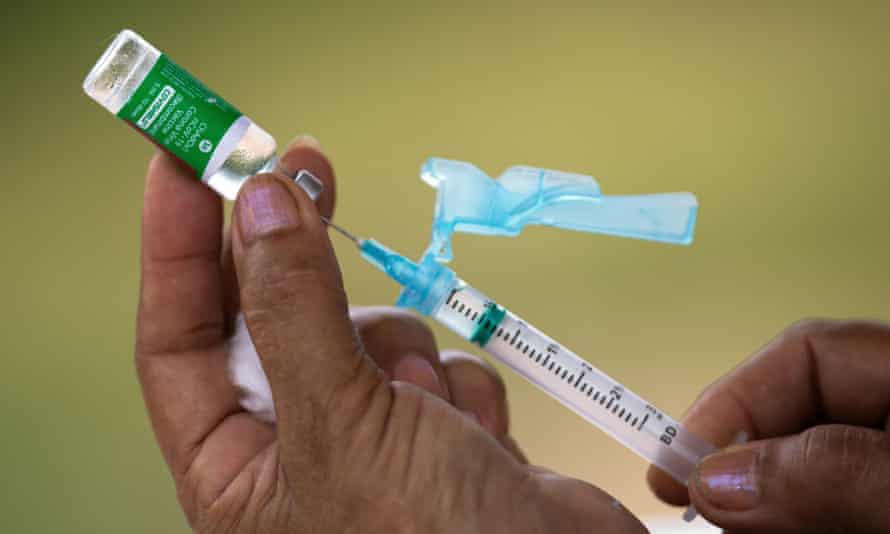The rapid development of effective, safe vaccines in just under a year is something of a scientific miracle
Do Guardian

At the start of the pandemic, it was very hard to predict anything. There were predictions of endless Covid-19 pain, wave upon wave of sickness and death, and fears that we would be stuck with painful trade-offs between our health and livelihoods for years to come.
But the vaccinations have changed everything. The light at the end of the tunnel is now so much closer than we could’ve hoped back in March 2020.
Few people would’ve – could’ve – predicted the speed with which we have developed vaccinations. If you had asked most scientific professionals what was a realistic timeline for effective vaccines to be rolled out, most answers would’ve run to years. And this was an understandable assumption – prior to Covid-19, the quickest vaccination development took four years, and many vaccines took far longer than that.
Covid-19 was first sequenced on 10 January 2020. The first Covid-19 vaccination not as part of a clinical trial was given on 8 December 2020 in the UK. 333 days in total to go from the most basic science to an effective, safe vaccination that is already saving lives across the world.
But with this miraculous success has come a slew of arguments. Should we be going with the most clinically efficacious vaccine that will block more transmission? What about herd immunity – which vaccine will provide us with the most protection long term?
To an extent, these discussions are important. Despite the early stage of the worldwide vaccine rollout, there is some data that certain vaccines have proven more effective in the short term against both the initial virus and its variants. If our aim is to keep Australia from having any disease outbreaks at all, as we have done so well with our Covid-19 restrictions, there’s a reasonable debate to be had about which vaccine we want to use.
But equally, it’s easy to miss the woods for the trees. Even the least effective vaccine available appears to reduce the risk of the things we care about most – hospitalisation and death – by a very large amount. While individual trials were not powered to detect a statistically significant effect, the overall impact of vaccines seems to be that they reduce your risk of getting really sick from Covid-19 even if they don’t stop you from getting the disease entirely.
On top of this, herd immunity isn’t a sure-fire bet no matter the vaccine. We can deal with variants in the short term, perhaps, but when we consider the really long term, things become inherently uncertain. If one vaccination prevents onwards transmission for 24 months, but the protection wanes and then disappears entirely over the course of a decade – similar to, for example, the whooping cough vaccine – then herd immunity would be much harder to maintain. We might be left in a situation where, similar to influenza, we all have to get vaccinated every year, except instead of it being a public health bonus it’s a national necessity because otherwise the virus will break out again in the community.
Given that the disease is unlikely to be eliminated in much of the world any time soon, we have to deal with the unwelcome fact that people will be bringing coronavirus into the country for the foreseeable future. SARS-CoV-2 will continue to mutate, and as I said at the start, making predictions is something of a fool’s game.
All that being said, we can deal with what we know now, and what we know now is that all of the approved vaccines are safe and effective. Yes, there is some debate over whether, from a public health standpoint, the long-term benefits of one immunisation over another are important. I’m not trying to stifle that conversation – it’s a discussion we need to have.
But we should take a moment and consider where we were in February 2020, and how amazingly far we’ve come since then. We may have to live with Covid-19 for a time longer, but even the least effective vaccine approved so far is a level of success that no one predicted a year ago.
In Australia two vaccines have so far received approval from the Therapeutic Goods Administration: the Pfizer vaccine, which has an efficacy rate after two doses of 95%, and the Astra Zeneca vaccine, approved on Tuesday, which has an efficacy rate of 62%. A third vaccine, Novavax, with an efficacy of 89% in phase 3 trials, has been purchased in advance by the federal government but not yet approved for use in Australia.
So which vaccine will I be getting, as an epidemiologist and public health worker? Well, I agree wholeheartedly with Nobel laureate Professor Peter Doherty on this one: I’ll take whatever I’m offered (and be glad to have it).
The best vaccine is the one that’s in your arm.
• Gideon Meyerowitz-Katz is an epidemiologist working in chronic disease

